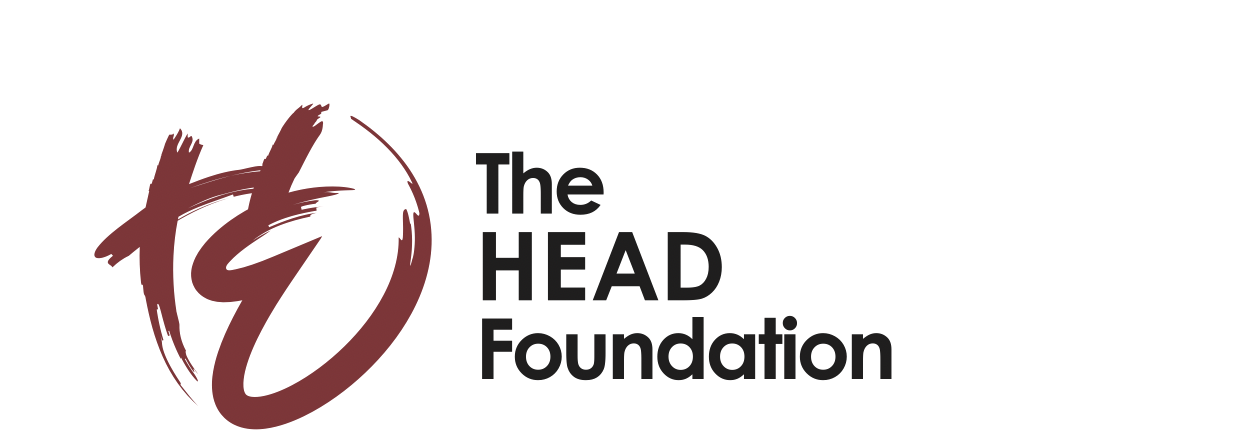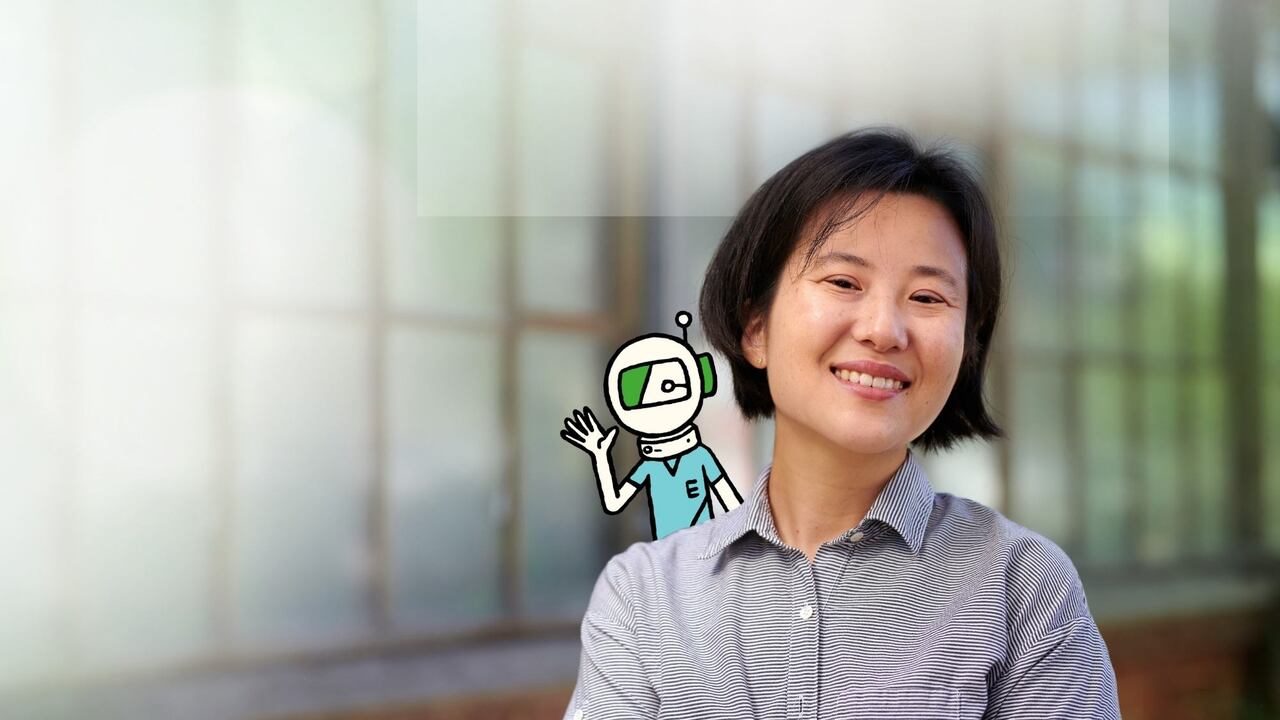An Interview with Sooinn Lee
In your opinion, what is the most important aspect of a good EdTech product – content, technology or design?
I always believe design is the most important in an EdTech product, especially when the products I work on are targeting young children. Education technology is all about scaling. We try to leverage technology to bring education to tens of thousands of children, and also to help teachers and schools to be more effective in teaching. For that reason, a good product should be designed in such a way that children and teachers are willing to use it in their daily environment. It shouldn’t be a product that tries to incorporate all the latest technology and include lots of content, but needs to be designed to attract and motivate its target users to learn with it.
Technology is important too because it goes hand- in-hand with design. A designer should have a good understanding of the available technologies so that he or she can take advantage of them to come up with attractive products. However, technology cannot come first. The market is full of products that put technology before design. That is a recipe for failure.
As for content, I remember what I heard once from a teacher. She said the curriculum is not the first priority when one tries to introduce an education technology product. “As long as the children are willing to learn with the product, we can use it to teach anything anytime,” she said. “If they even refuse to touch the product, there’ll be no way to teach anything with it!” In that sense, in a selection process, the content shouldn’t be the first priority.
The Enuma team
Through a grant supporting the development of the learning app Selokah Enuma Indonesia, The HEAD Foundation partners with Enuma, Inc. to bring an innovative education solution to underserved communities in Indonesia. Source: www.enuma.com

We know you were a game designer before you started Enuma. In your EdTech products, you use games to motivate young learners and keep them engaged. Can you tell us more about the gamification of learning?
There are two key points I wish to share on gamification. In our case, we use gamification for a specific purpose and in a very limited way. Our target learners are children who do not necessarily know the benefits of learning, who do not always have intrinsic motivation to learn new things, or who are struggling with learning because they are from an underserved community. So there is a need to use games to motivate and engage them, or they may not start to learn on their own.
However, gamification is not the most efficient way to teach a child who is already motivated to learn. If you ask the kids who are already good at learning, they will tell you they simply enjoy learning, and they like the pure joy of being able to solve problems. To these children, all those sounds and animations and scoring systems are just distractions. They just want to absorb the information and obtain the knowledge in the shortest time. Gamification is best used with kids who have not found the joy of learning yet.
My second point is: some people use gamification in the wrong way. They separate the work and the fun, and make games the reward of learning instead of a part of learning. That is why we sometimes hear parents complaining about their children spending too much time on learning apps with very little learning gain. In these apps, learning is something painful to endure, and the fun is in the games that come after the learning. This sends the wrong message to the children, and does not help them to discover the joy of learning. For us, we try to make the process of learning itself as fun as possible. Sometimes we are successful, sometimes we are not, but we always try to link fun and learning in children’s minds and not separate them. So, we are talking about the right way and the right amount of gamification, and this goes back once again to the importance of design.
Technology, if not appropriately deployed, may lead to the widening of the “digital divide”. In your view, how can EdTech solutions be more inclusive, instead of deepening any existing disparities in the education system?
“We now believe distributing an EdTech solution through the public education system is the only way to close the divide in the system.”
Enuma is all about inclusion. We originally started off by helping children with special needs through digital learning. In our early days, we designed our products for children with hearing loss, with autism spectrum, and with learning disabilities. However, the early childhood education market is very much a parents’ market. It turned out it was mostly the wealthy parents who could afford to take advantage of education technology. Even though our original intention was to close the education gap, because we sold to families only, we ended up contributing to widening it. That was why our team decided to enter the Global Learning XPRIZE competition. Through that, we started to work with NGOs, and to target public education. We now believe distributing an EdTech solution through the public education system is the only way to close the divide in the system.
Designing the product to be inclusive is very important too. A good product should cater to the full spectrum of students in the classroom. Many education solutions continuously make the mistake of focusing on the children who can keep up with the teacher. What they do not realise is that more than half the children in the world cannot learn meaningfully in the school system. In fact, 60% of them fail to reach the basic proficiency level in literacy and numeracy despite their schooling. In classrooms everywhere, there are disadvantaged students who are struggling with learning because they are affected by all kinds of socio-economic challenges, have special needs, or come from a different language background.

Mtwara and Bagamoyo, Tanzania
23.2% of 7- to 13-year-old children are not enrolled in primary schools in Tanzania. The 2017 controlled trial of Kitkit School in rural Tanzania demonstrated that mobile technology approach as an educational tool has a great potential to facilitate ‘self-directed’ learning for children in remote or fragile areas. Source: kitkitschool.com
On the other hand, good students in conducive learning environments have been doing well in the classroom all along. These students will continue to do well with or without the help of digital tools. We should therefore focus on the rest of the learners who can really learn better with the help of today’s technology. This is not just about being inclusive, this is also about how we should set our priorities as solution providers and as a society. We should design our products for the disadvantaged learners and find ways to effectively distribute such products to them.
When you gave a talk in Singapore two years ago, you told the audience that Enuma does not aim to help good learners become even better, but to help make sure no child is left behind. Is this still Enuma’s mission today?
I visited Singapore in February 2020, when the pandemic was starting to spread in Southeast Asia. At that time, when we talked about disadvantaged learners, they were only a portion of the children who were struggling in the shadow of the school system. But for the last two years, we saw schools being locked down or only partially operating. Children were forced to stay at home and learn on radio, social media, or whatever clunky tech resources their parents could provide at home.
Global Learning XPRIZE
In May 2019, Enuma’s Kitkit School was named as one of two winners at the XPRIZE Global Learning Awards. The competition challenged teams to develop an open-source, scalable software solution to enable children in developing countries without access to schools, to teach themselves reading, writing and arithmetic. Photo: Associate Press
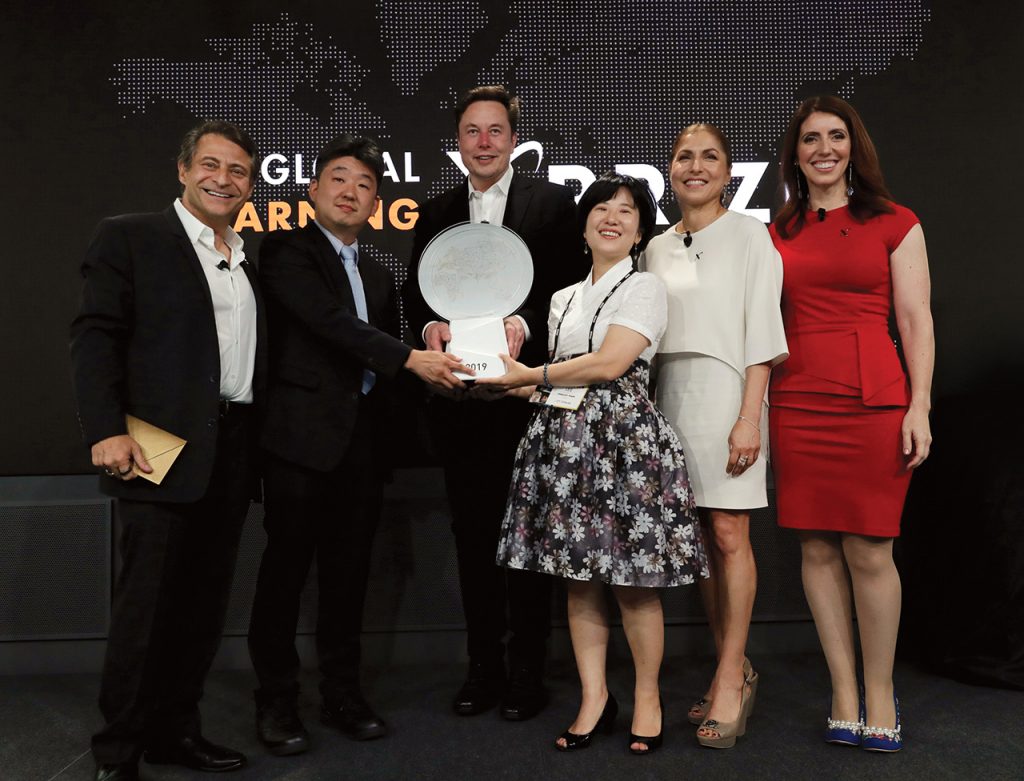
This happened to almost all children. So almost all children became disadvantaged learners in the last two years because they missed much of their learning due to their not being able to attend school normally.
Take for example the children in Grade 2 before the pandemic. They would have learned only part of what they were supposed to learn in Grade 2 and Grade 3 in the last two years, if they even learned anything at all. When they eventually return to school, they will have to continue their learning in Grade 4 but they will face difficulties because there is a big gap in their Grade 2 and Grade 3 knowledge. In that sense, a vast majority of the learners were left behind because of the pandemic. If we don’t help them to catch up, their learning loss will continue to accumulate until they graduate from high school with poor academic results.
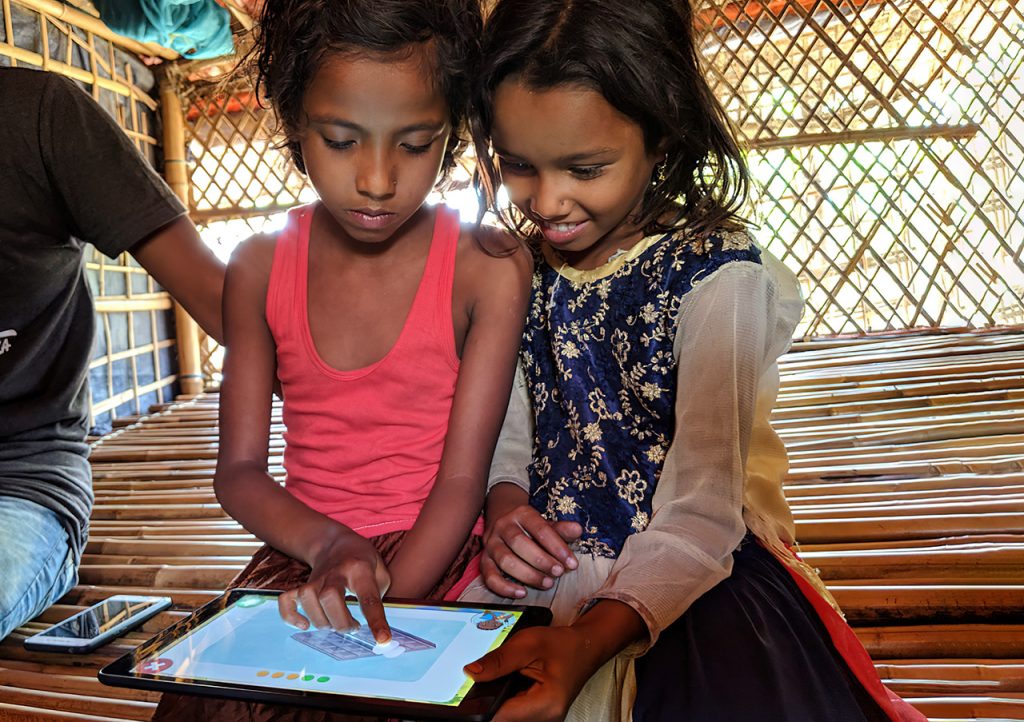
Cox’s Bazar, Bangladesh
In partnership with the International Rescue Committee and Imagine Worldwide, Kikit School for Rohingya Learners is used to teach refugee children in Bangladesh. It is estimated that a majority of the Rohingya children have never participated in any form of schooling prior to and since arriving in Bangladesh. Source: kitkitschool.com
The situation I just described is very new to us. Before the pandemic, out-of- school children were rare and extreme cases in most societies. They were usually children of refugees, illegal immigrants, or from extremely poor rural communities. Now we have so many children who are totally or partially out of school. We need to help them catch up and stay on track so that when they finally return to their classrooms, they will be able to continue their learning normally. That is why our work is more important now. During the pandemic, we distributed more than 40,000 licenses of Kitkit School to 55 countries for organisations to try mobile- based education. And later this year, Kitkit School will be used to teach 200,000 refugee children in Bangladesh. We just launched a literacy app in Indonesia and have committed to making it permanently available for free for all Indonesian users. I am really thankful that we came to Southeast Asia right at the beginning of the pandemic, and subsequently developed Sekolah Enuma with the support of The HEAD Foundation and the Kuok Group. We now have a product to help the parents and children who are struggling. Our collaboration was really timely.
Outside of Indonesia and Bangladesh, do you see similar situations in other parts of the world as well?
Absolutely. In the US, digital learning was introduced in schools many years ago. Many children in the US have personal Chromebooks. During the pandemic, schools ran online classes on Zoom. But despite being digitally well equipped, 20% of the children did not log on, and 40% did not learn properly during their remote classes. Learning loss among disadvantaged groups was especially serious. As a result, schools are downsizing their curriculum substantially. Such learning gaps will create problems in the coming years.
In South Korea, recent reports assert that young children from vulnerable populations or from immigrant families have fallen behind in basic language skills due to the pandemic. The learning centres and after-school classes that usually help them to catch up have been shut down for the last two years. Enuma is working with the local government and the Ministry of Education to support these children to acquire literacy skills through our software.
At the beginning of the pandemic, US researchers predicted the one year of learning loss would reduce 2% of future earnings – hundred of billions of dollars – for this generation. The pandemic hasn’t ended yet, and will still impact our schools in 2022. Massive learning loss is no longer an issue of a few countries or schools in the least developed countries. This is a real problem we’ll all face together.
Kitkit School
Kitkit School is a tablet-based learning suite designed to provide children with the foundations and practice needed to build fundamental skills in literacy and numeracy regardless of access to school or resources. Source: kitkitschool.com
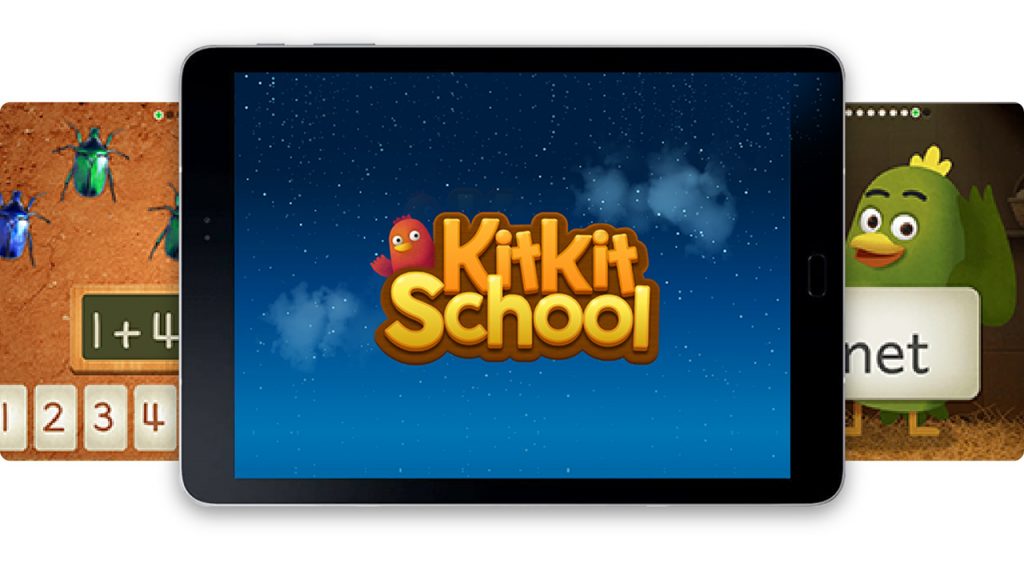
Students today are expected to learn the so-called 21st Century Skills, for example, interpersonal skills like collaboration and teamwork, as well as other new knowledge like digital literacy and innovation skills. Is EdTech a good tool to teach these skills?
I think there are two categories of 21st Century Skills. The first category are new knowledge like digital literacy, financial literacy, data skills and the ability to distinguish between facts and misinformation. These new skills are very important because they help us make quick and sound judgements in today’s world. However, these skills are difficult to teach in schools because it takes time for the teachers to be trained to teach them. While the teachers are being trained, the trends associated with these skills would have already moved on to their next phase. Education technology has a clear advantage in teaching these kinds of skills because the delivery of knowledge is direct and more timely.
The second category are social and communications skills. To learn these interpersonal skills through education technology, children must connect to the internet. The internet is in fact a very effective place to learn such skills because a lot of communications and collaborations are already happening online, and it is relatively easy to meet like-minded people online to exchange ideas and to collaborate. However, the internet can be a very dangerous place for young people. Even for middle-school and high-school learners, we need proper parental or teacher supervision to keep them away from harmful content and dangerous encounters on the Internet. Many young learners recently got connected to the internet for the first time because of the pandemic. Some children actually got lost and failed to strike a proper balance between school work and all the ‘fun’ available on the internet. And they sometimes encountered dangerous information and harmful people through the internet.

So I think it is still too early to tell whether we should use EdTech to teach young learners interpersonal skills. That’s not because it is not a good tool. It’s because after all these years, we still have not been able to build a safe environment on the internet to protect our children.
Many stakeholders in the existing education system are reluctant to disrupt the classrooms with EdTech tools, for fear that teachers will be replaced with the widespread adoption of EdTech. What is your view on the roles of teachers in relation to EdTech?
First of all, I think education technology today is still not coherent enough to totally replace teachers in any of their current roles. EdTech is a great supplementary and supportive tool to help teachers become more efficient in the classroom, but I believe the school system will still be centred around teachers in the near future.
“We need grown-ups who can facilitate learning in the classroom and inspire our children to become responsible citizens. I don’t think EdTech or AI can ever do that.”
Even if digital technology becomes more advanced in future and allows learning to be more student- centric, I think we need grown-ups who can facilitate learning in the classroom and inspire our children to become responsible citizens. I don’t think EdTech or AI can ever do that.
What I believe is that EdTech is very effective in preparing young children for school, and helping children to catch up to one another’s pace in school. Our dream is to use our latest product Enuma School (Sekolah Enuma in Indonesia) to equip children well with basic literacy and math skills before they start and as they enter schooling. That way, when they meet their teachers in school, they will have more room and the appropriate intellectual capability to learn how to be good students. Given its ability to monitor and track learning individually, EdTech can also help teachers to better understand and help different types of learners more effectively. In the end, we still need teachers as mentors and role models. EdTech will help them to play these roles more effectively.
As we know, a large amount of data can be collected from personalised digital learning made possible by EdTech. In reality, how useful is such ‘big data’ in improving the quality of education?
I think there are three ways to make use of the data we collect through education technology. First of all, we use such data to better understand what is going on in teaching and learning. For example, around 2015, some policymakers in the US used data collected from classrooms to identify who the good teachers were, and why they were good. They then analysed what these teachers did right in their teaching, and trained other teachers to teach in the same ways. Also, with real-time data collected through EdTech, we no longer need to wait until exam time to find out who among the learners are falling behind, and in which area each of them needs help. Feedback and help can be given more frequently in a timely manner. All of this is already happening, and they improve the overall efficiency of learning.
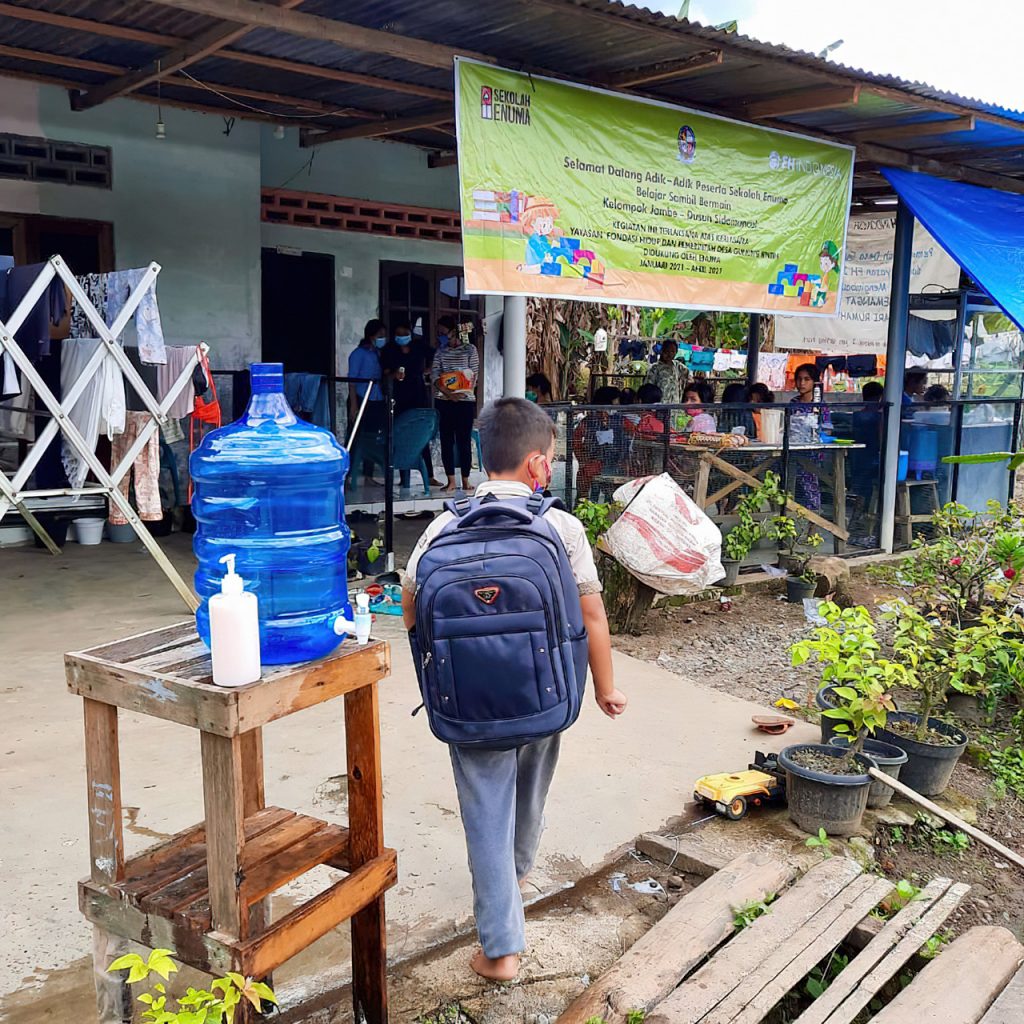
Sekolah Enuma
Sekolah Enuma Indonesia is a digital application with hundreds of games, books and videos that support children’s learning of Indonesian (literacy), Mathematics and English as an Additional Language. With content covering Early Childhood Education through Grade Two, Sekolah Enuma can be run on a mobile or tablet device. Once installed, it does not require connectivity to function. Source: enumaschool.com
Secondly, with big data and AI, new and better methods are being introduced to improve learning. For example, our team is currently working on a speech recognition function which can analyse a learner’s pronunciation very accurately, and continuously suggest how it can be improved. In the past, the amount of data required to drive such an AI function was impossible to collect by any teacher or even by a single company. Today, we can tap into the large system provided by Google or Microsoft to help children improve certain skills in very effective ways.
“In the future, we will be able to use information collected through EdTech to understand children’s learning needs a lot better, and provide personalised interventions.”
In the future, we will be able to use information collected through EdTech to understand children’s learning needs a lot better, and provide personalised interventions. As we know, there are different types of learners because we have different cognitive characteristics. For example, we know about 10% of the population have a hearing problem called auditory processing disorder (APD). AI and big data can help us identify children with APD and help them learn better with visual cues and learning activities which they can do better with their eyes and hands. There are also learners who do not process visual information very well. Some people have short-term memory issues. With good data and the help of AI, we believe effective learning strategies can be provided through EdTech solutions. Many EdTech companies, including Enuma, are trying to unlock the secrets of the human brain and neuroscience so that we can help future learners to learn better.
The new face of learning
The education of more than 800 million children across Asia has been disrupted due to school closures since the start of the COVID-19 pandemic in early 2020, and of that number, more than 27 million children have been waiting for more than a year to return to their classrooms, according to a report by UNICEF and UNESCO. Photo: Dreamstime
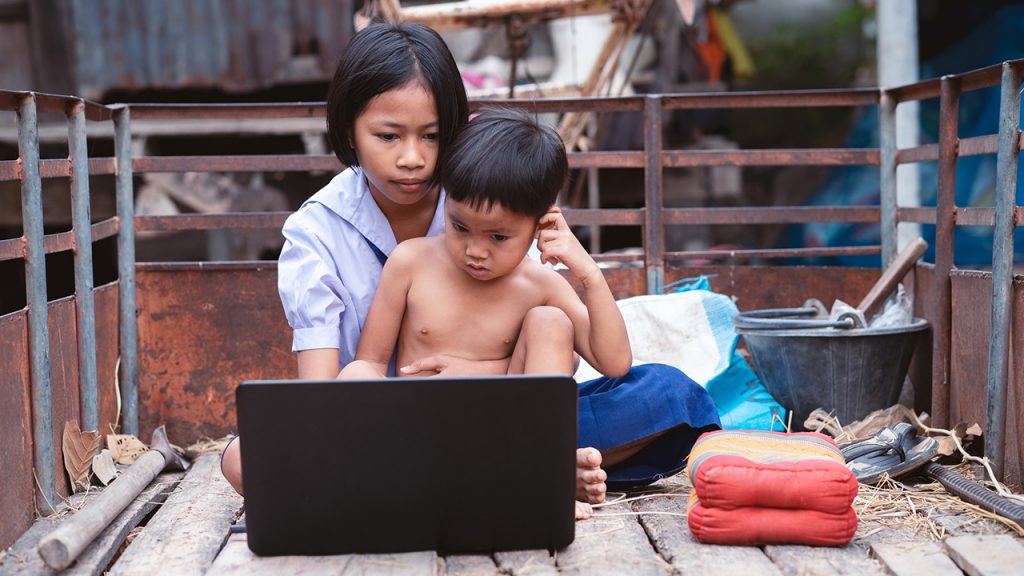
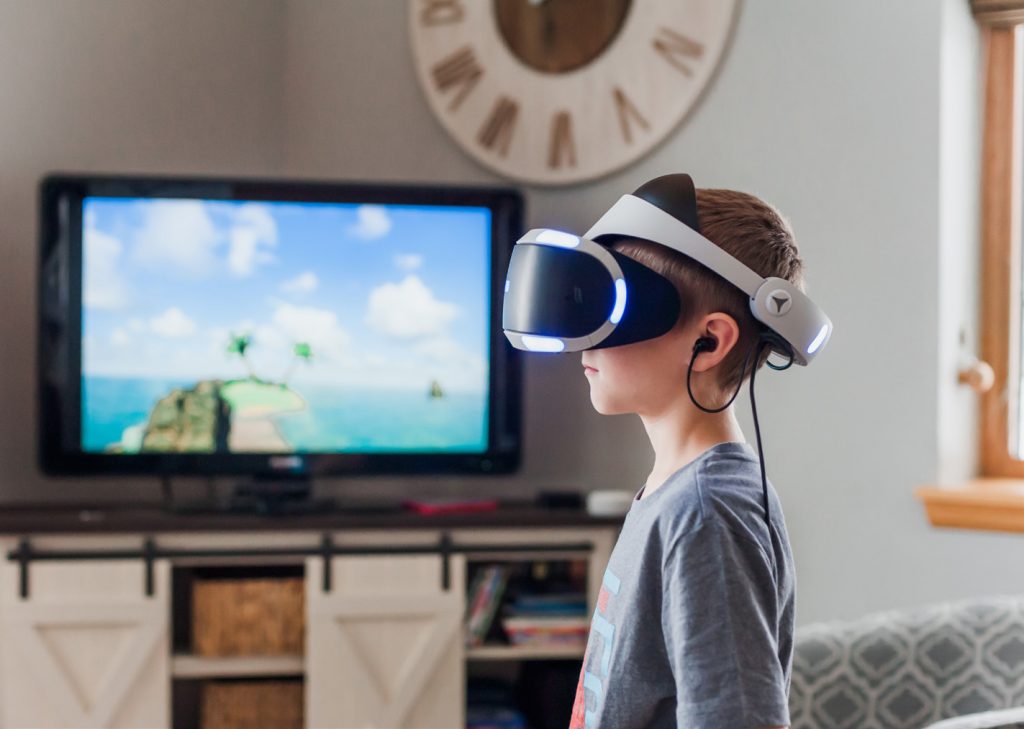
Supporting students with autism using virtual reality (VR)
In recent years, VR has emerged as an increasingly useful tool to help children with autism spectrum disorder (ASD) improve their communication and social skills, overcome phobias and better connect with their family, friends, and the world around them. Studies have shown that virtual experiences can help autistic individuals increase their cognitive flexibility outside of the digital environment. Photo: Jessica Lynn Lewis / Pexels
How has the pandemic affected Enuma’s business strategy, development plan and product design? How has the pandemic changed Enuma as a company?
We changed our strategy dramatically during the pandemic. Before the pandemic, we had two very distinct markets. One was the parent market in East Asia. They remain the customers of our early math and early English learning apps. At the same time, we delivered similar products to out-of- school children in refugee camps and vulnerable communities in less advantaged parts of the world.
The pandemic gave rise to a third group of users for our EdTech products. They are the general students in the public school systems who need to catch up on learning loss. In other words, the pandemic accelerated the adoption of digital learning in public schools. I thought the process would take ten years, but it happened in the last 18 months. So we are now supplying the same set of very high quality and comprehensive solutions to three markets which have somehow morphed into one because of the pandemic. We just happened to have the right products ready at the right time.
Do you think these digital transformations in the education sector will stay long enough to lead to some fundamental improvement in how we learn and manage learning?
Frankly, we don’t know for sure. The world had never experienced such a massive learning loss before the pandemic, and we are still uncertain of the magnitude of its eventual impact. Before the pandemic, we were worrying about children with low literacy and math scores in early grades. A recent research found that at least 100 million more children have failed to attain minimum proficiency in literacy and math because of the pandemic. How we will do in future depends on how we deal with the aftermath of the pandemic.
We just talked about children who recently returned to school as fourth graders but didn’t learn much in Grades 2 and 3. This presents a problem because our education system is based on age and not on proficiency. Will society truly try to improve the school system at scale? Will there be enough digital solutions that are ready to help? It will require collaboration between policymakers, schools, private companies and parents, and every new policy will largely be experimental with high risk. We will have to wait and see.
SOOINN LEE
Sooinn Lee is the Co-Founder and CEO of Enuma, Inc., an education technology company that is developing early education applications that help all learners, including those with special needs, to be independent learners. Sooinn led her team to develop Todo Math and Todo English, popular education apps downloaded more than 9 million times. In 2019, Enuma’s Kitkit School won the Global Learning XPRIZE competition, by helping children in remote villages to read, write and do math independently with tablet software. She was named as an Ashoka Fellow and a Schwab Foundation Social Entrepreneur of the Year (2020). In 2020, The HEAD Foundation, PT Gunung Madu Plantations and PT Pemukasakti Manisindah provided a grant to Sooinn and her team to develop Sekolah Enuma Indonesia (SEI) — an early childhood digital learning app for young Indonesian learners. SEI is currently being rolled out to thousands of Indonesian children by multiple NGOs. Its literacy module is also available on the Apple App Store and Google Play Store for free download in Indonesia.

DECEMBER 2021 | ISSUE 9
Tomorrow's Technology Today
